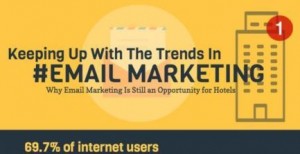— June 29, 2017

skeeze / Pixabay
A great candidate journey doesn’t just happen overnight. Ensuring that the candidate experience is optimal at every touchpoint typically requires a lot of work.
So how do you get started? How do you take the first step to creating a best in class candidate journey?
1. Take your own application
There’s a severe disconnect over the application experience – the average candidate spends 3-4 hours submitting a single application, while 70% companies think it takes them less than an hour.
Hardly surprising then, that 60 percent of job seekers quit in the middle of filling out online job applications because of their length or complexity.
High dropoff rates lead to loss of top talent, brand damage from candidates frustrated with the process, and the higher costs associated with abandonment in cost-per-click recruiting models.
Taking your own application is the easiest way to walk a mile in your candidates’ shoes and see what needs to change. Apply with a fake name and details, and take an honest look at your process.
What do you think?
Hopefully
2. Focus on relationships not resumes
Online people are not candidates or consumers. They are both. There is no distinction, people are just people. They look at purchasing decisions and applications in the same way.
This represents a problem for recruiting teams.
Marketing departments have got extremely good at providing a customized experience for us. They pour money into the consumer journey, investing in our relationship with their brand and making it as easy as possible for us to buy.
Compare this to the average recruiting journey. 65% of candidates say they either never or rarely receive notice of the decision made on their application from an employer.
Instead of feeling like a company cares about them and is invested in their future, they feel like they’re throwing their CV into a black hole.
Companies need to move from a transactional approach (filling a role) to a relationship first approach (creating talent pools, and building value with candidates whether they apply or not).
If you want to make talent your competitive advantage you need to learn from marketing departments and focus on building relationships, not collecting resumes.
3. Map your ideal candidate journey
This is an exercise that requires a whiteboard or a large stack of A3 paper.
Sit down with your team and map out what an ideal candidate journey looks like. Storyboard the entire process from start to finish (we’re talking everything from sourcing and prospecting, to offer acceptance) what does best in class really look like?
Here are a few questions that you should start with though:
- Who is your ideal candidate? What does your candidate persona look like? What’s the best way to interact with that person online?
- What do you want candidates to feel when they first come across your brand online?
- How regularly can you reasonably expect your team to communicate with candidates? Is there a way that you can use automation to make a candidate’s experience more high touch?
- How can you make candidates feel welcome, valued and well informed at every stage of your process?
- What is the best way to nurture candidates that aren’t ready to apply and keep them warm for the future?
4. Learn from your mistakes
No one has a perfect candidate journey.
There, I said it.
There’s always room for improvement, always space for optimization. You can always do more to strengthen your brand, improve your process and delight candidates.
There’s a simple way to learn what’s currently broken and try and fix it. Ask your candidates.
They’re the people that are actually going through your process, they’re the ones that you need to impress. They have all the answers.
Some of the companies we speak to are surveying candidates at the end of the application process. This is a step in the right direction, but typically the survey data sits in an excel file, never to be opened again.
Most companies are in worse shape. They have no idea what candidates think until the reviews start rolling in on Glassdoor (a very public way to find out!)
Ideally, you should get feedback from candidates at every stage of the recruiting process. This way, you can see bottlenecks and issues immediately and put immediate fixes in place to improve the candidate experience.
Business & Finance Articles on Business 2 Community
(62)
Report Post






